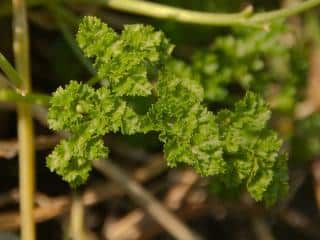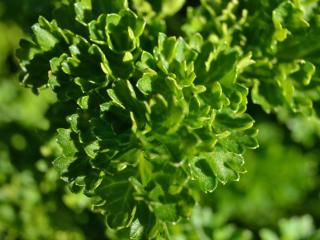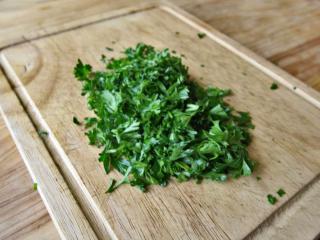

A special type of parsley, curly-leaf parsley is even easier to care for than flat-leaved parsley.
Curly parsley key facts:
Name: Petroselinum crispum var. crispum
Common name: curly parsley
Family: Apiaceae
Type: herb
Height: 12 inches (30 cm)
Planting distance: 8 inches (20 cm)
Exposure: semi-shade
Soil: rich, light, cool, draining – Planting: February, March – Harvest: starting in May
This biennial aromatic herb called curly parsley, is originally from western Asia. It’s one of two parsley varieties most grown in our gardens, its flat-leaf counterpart being the other one. Identifiable by its ribbed and branching stems covered in bright, deeply cut and, of course, frizzly-curly leaves, this parsley variety produces dense bunches. It may not be as aromatic as the flat-leaf type, but it sure does win in the looks department. In summer, the floral stems of curly parsley boast umbels of tiny white star-shaped flowers.
Curly parsley seed sowing takes place right in the growing bed, starting in February warmer climates, and March elsewhere. As it happens, this herb doesn’t appreciate being transplanted. Let’s also note that you can sow and grow curly parsley in pots.
Just be patient. Curly parsley takes a while to germinate. You can expect the seedlings to pop up about 30 days after sowing (yes, a whole month).

Want more leaves? Cut the flower stems as soon as they show up. But, let one of the plants go to seed. You’ll thank yourself next year when it self-sows!
Curly parsley: a real tough cookie! Not one to back down from diseases. Just keep an eye out for slugs, they have a soft spot for young shoots.

Curly parsley is at its flavor peak when fresh, just plucked off the plant. But, good to know, it also keeps very well frozen.
Another method? Dry your curly parsley out.
